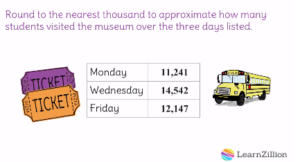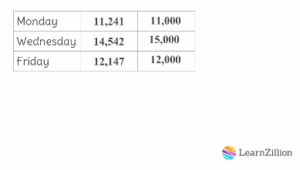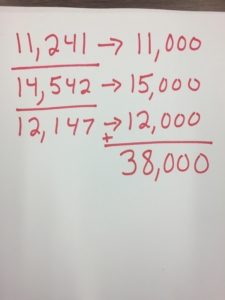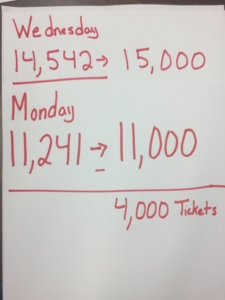In 4th grade students also use rounding to estimate sums and differences. This strategy is used to make sure that their estimation is reasonable. They used this strategy in 3rd grade.
Below is some examples of estimation that students learned in 3rd grade.
What is estimation?
Estimating is an important skill. Estimation is the process of getting an approximate amount, sum or difference. We want students to be able to use mental math to more quickly to arrive at a reasonable answer for their sum or difference. In 3rd grade, students are adding and subtraction fluently within 1,000.
What are different ways to estimate?
• Front-end estimation is a reasonable strategy to estimate sums and differences when all or most of the numbers have the same number of digits. To use this strategy, add or subtract the front digits of the number (or the digits in the greatest place), then make adjustments based on the numbers in the next greatest place.
Example: 345 + 416 + 298. Add the 3, 4, and 2 hundreds (numbers in the greatest place) to get an estimate of 900. Adjust by adding the numbers in the next greatest place which are 4, 1, and 9 tens to get 140. 900 + 140 gives you a front-end estimation of 1,040.
For more information on 3rd grade strategies check out the following link. http://smathsmarts.com/strategies-for-estimating-sums-and-differences/
In 4th grade your child will be using some of the same strategies learned in 3rd grade to solve problems with greater numbers like shown below.
Round to the nearest thousand using a strategy that works.
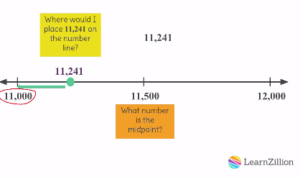
Use those estimations to find a sum or difference. For example with this set of numbers we can find out approximately how many students bought tickets on all three days as shown below.
We could also find about how many more students bought tickets on Wednesday compared to Monday as shown below.
To find out more about using rounding estimate using addition check out the learnzillion below. https://learnzillion.com/lesson_plans/3445
